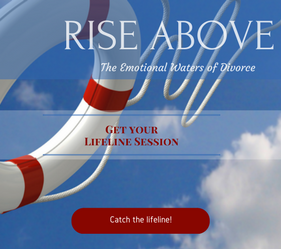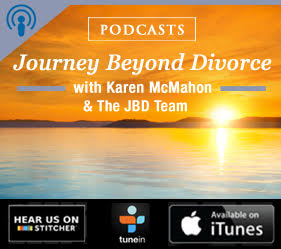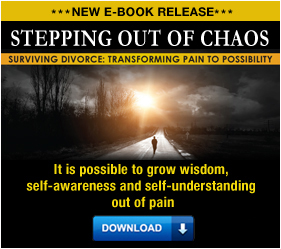Guest post by Adam Krim.
Your relationship has been floundering for a while. You and your partner have tried talking, date nights, and counseling – all to no avail.
Whether the relationship has devolved into dysfunctionality or whether the spark has, in your minds, been irreparably extinguished – for whatever reason, you and your partner have reached the painful decision to part ways.
So what’s your next step?
Before running to “call your lawyer,” bear in mind that the roadmap for separation and divorce has undergone fast modifications recently, all of which provide you with several options to consider.
There are 4 main issues that need to be resolved in any separation and divorce proceeding: Parenting (custody); child support; equitable distribution of marital assets and liabilities; and maintenance (alimony). Often differences of opinion arise as the couple considers what result they want to achieve on each of these issues. So the first thing the couple needs to do is decide on a process to achieve their desired results.
In the past, a couple wishing to divorce had no alternative but to retain lawyers and litigate their differences in court. Today there are options. There are three main processes to choose among: traditional litigation; collaborative law; and mediation.
In October 2010, New York State abolished the need for cause to obtain a divorce. The law today allows for the granting of divorce based on a finding that the marriage has irretrievably broken down for a period of at least 6 months. This means that divorcing parties no longer have to claim and prove a justifiable cause for divorce (infidelity, cruelty, abandonment for a period of at least a year etc.) which often results in lengthy, painful and costly court trials.
In short, you can get divorced in New York State more easily and quickly now than in the past.
For couples who are so caught up in conflict together, and who have the financial resources to survive a lengthy court case, litigation may be the only viable course of action. Litigation is an adversarial court proceeding which often takes several years to resolve. The benefit to litigation is that the lawyers do all the work, all the arguing and negotiating. One down side to litigation is that this process deprives the couple of the autonomy to craft their own tailored settlement. Where there is no settlement, a third party – the judge – imposes the decision on the couple and their family. In addition, claims and arguments are often raised during litigation which increase the emotional and financial stakes of the dispute which can lead to more emotional trauma to the couple, their children and families. Litigation also tends to be the longest and most expensive process for divorce.
It’s worth bearing in mind that the overwhelming percentage (by most accounts upwards of 95%) of litigated cases end up with a settlement between the parties rather than a judge’s ruling. Logic suggests that if at the end of the day there will be a settlement, why not begin with this mindset and process that is designed for settlement?
To that end, two new processes were devised.
The first process is mediation. In mediation the couple meets with a single professional, the mediator, who facilitates and guides the couple as they engage in their conversation while resolving all their differences and reaching agreements on all necessary issues related to the divorce.
The major benefit to mediation is that the couple themselves reach their own decisions, rather than leaving it to the judge to make these very personal and important decisions. The empowering aspect of making your own decisions has a spillover effect to helping you redefine your relationship with your soon to be ex. Remember, if you have children with your partner, then you will be involved with that person, in a relationship with that person, for the rest of your life through your children. Mediation allows you the forum to talk together directly, which often results in the couple finding that they have a viable co-parent in their ex. Additional benefits to mediation are that this process tends to be the fastest of all the processes and also the least expensive. Even if the hourly rated charged by the mediator is roughly the same as a lawyer, the fact that most of the fees paid are for the one mediator, even after you factor in individual lawyer fees each of you will incur in consulting with your own attorneys, renders this process the least expensive.
The main benefit of mediation – that you and your partner talk directly to each other – might be a detriment for some couples. Couples who have uneven bargaining powers or who cannot talk together, or in cases of abusive relationships, might very well not be viable candidates for mediation. These couples might well benefit from hiring their own advocates – lawyers who will argue and negotiate on their behalf. Before contemplating litigation, such couples would benefit from considering the second new process – collaborative law.
In collaborative law, each partner hires his/her own lawyer to advocate on his/her behalf. Meetings typically are attended by the couple and their lawyers who conduct the negotiations with an eye to reaching an agreement without resorting to litigation. To maintain the integrity of this process, the retainer agreement with the collaborative lawyers states that in the event this process does not result in an agreement, the lawyers are prevented from representing either of the parties in any subsequent litigation.
The benefits to the collaborative process are that the attorneys do most of the actual negotiations allowing the divorcing couple to minimize their active participation in the negotiations. Although this process tends to be more expensive than mediation, it generally would be cheaper than litigation. And faster too. Most importantly however, the collaborative process – like mediation – has at its core the value of relationship building and guiding the disputing couple in ways to effectively engage in meaningful conversation geared towards resolving differences.
So there you have it: Three processes for separation and divorce each designed to work best for a specific type of relationship. Which process to choose and how to ensure you choose the best option requires clarity of thought based on a broad perspective, a clear vision of your desired outcome in all its ramifications, that is, a clearly defined goal. The more clearly you can envision the end goal, the more easily you will be able to identify the correct path – process – to choose.
Remember, there is life after divorce.
Consider/Create the Possibilities
Adam J. Krim www.resipsa.net
[divider style=”solid”]
Adam J. Krim, an attorney, a family/divorce mediator and a certified professional coach, is the founder of Res Ipsa Mediation and Coaching, LLC, with its motto “Consider/Create the Possibilities.”
Mediation and Coaching are essentially teaching modalities. In both processes Adam facilitates the learning of new perspectives and ways of thinking – based on his clients’ core values – which helps them turn obstacles into opportunities to leverage success in the pursuit of achieving goals, moving ahead in life, and greater long term happiness. For Adam, there is no greater calling.
After practicing law for twenty-five years, both in New York and in Israel, Adam decided to combine his love of teaching (he’s been teaching martial arts for over 20 years) and working with people by training with iPEC to become a Certified Professional Coach. As an attorney and a family/divorce mediator, Adam is intimately familiar with the challenges faced daily by professionals in today’s world. He lived the life; he knows the lifestyle.
In addition to his CPC certification and his advanced training as a family/divorce mediator, Adam is also certified as an Energy Leadership Index – Master Practitioner and has earned the ACC credential from the International Coach Federation.




